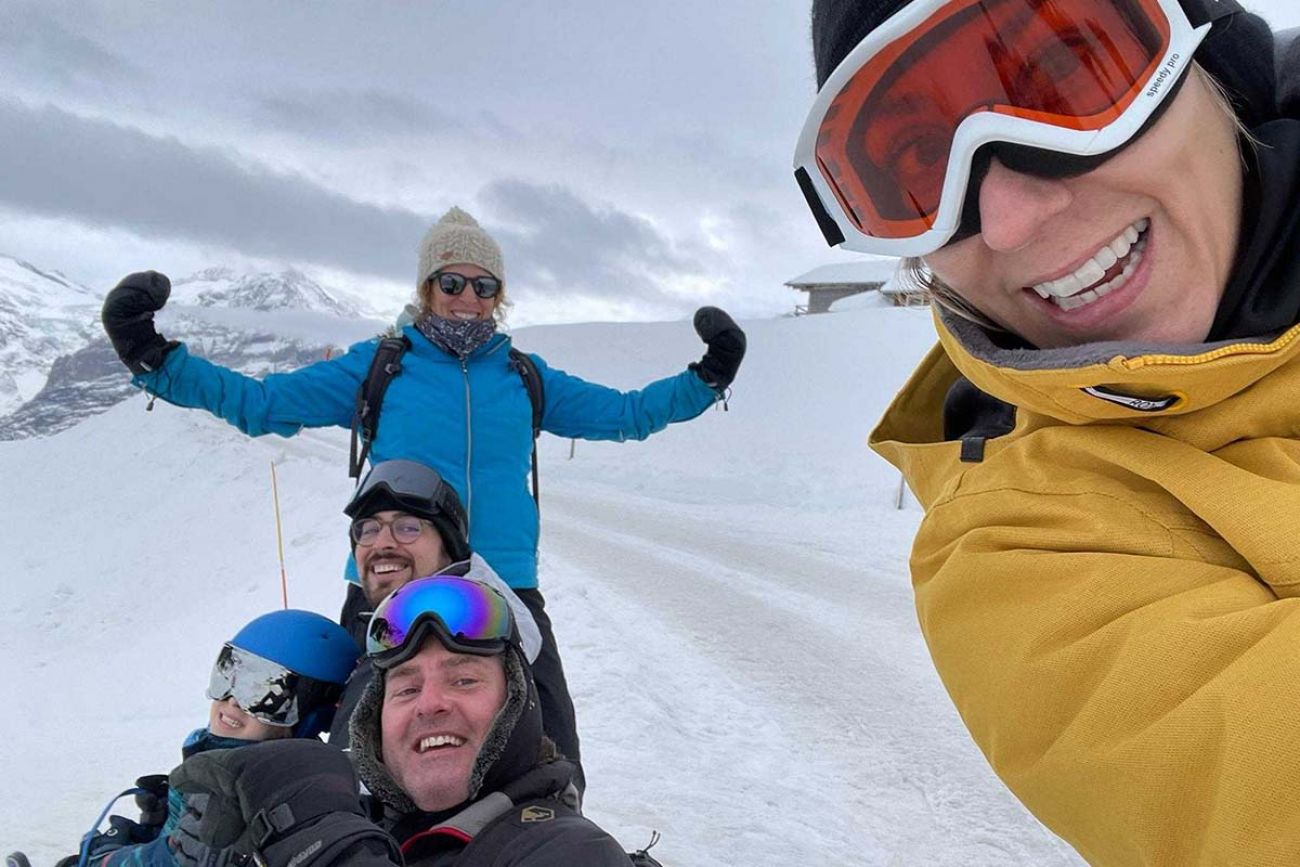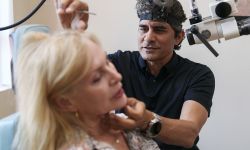COVID may be here to stay. So much of Michigan is weighing risks, moving on

COVID-19 is still raging across much of Michigan, with some of the highest rates of new infections ever recorded and many hospitals nearing patient peaks.
Outside those hospitals, though, much of Michigan has weighed the risks and concluded it’s safe to resume pre-pandemic activities. Highway traffic is up, while crowds have returned to sports events, concerts, gyms, bowling alleys and work.
They’re folks like Cindy Anderson of Traverse City. A year ago, she eschewed restaurants and frequent travel, figuring doing so would keep her healthy and avoid COVID-19.
Related:
- Next up: COVID vaccines for Michigan children under age 5
- U-M study: Ivermectin doesn’t treat COVID, but insurers pay for it anyway
- How many COVID cases are in Michigan schools? State has no idea anymore
- Omicron requires a better mask. How to choose one that’s best for you.
But in December, as infection rates rose, she calculated that it was more important to see her two children living in Switzerland and took a three-week trip to visit them.
“I just figured between being vaccinated and having had COVID, I’m going to take my chances,” said Anderson, a real estate broker. “I’ve got to go on living.”
Amid signs omicron is less potent than other strains — and indications that the pandemic has already become an endemic that isn’t going away — many have begun to simply live with the virus, experts say.
And though economic activity is down, it’s experienced nowhere near the drop that other COVID-19 surges have spurred. Unemployment has fallen to 5.6 percent in Michigan, far below the peak of 23 percent in spring 2020, but still above the 3.7 percent in February 2020, before COVID struck.
“People are still going out to eat, they’re still getting carryout,” said Scott Ellis, president and owner of Michigrain Distillery in Lansing and executive director of the Michigan Licensed Beverage Association.
“I think more people are coming over to ‘we’ve got to move on,’ ” Anderson said.
There’s still a long way to go: On a recent Thursday night, Ellis said his distillery sold six drinks total.
On Jan. 15, 19,515 people attended a Red Wings game in Detroit, the hardest-hit city by omicron, and the next day another 18,178 went to a Pistons game at Little Caesars Arena in the city. Last Friday, a sold-out crowd poured into Van Andel Arena in Grand Rapids for a concert by country rocker Eric Church.
Mobility data and projections compiled by the federal government show roughly the same percent of people are out and about as before the pandemic, 80 percent.
As many as 31 percent of Michigan residents were staying home during the first blast of the pandemic in March 2020 and again during a deadly wave, according to the data from the U.S. Department of Transportation.
At the Rochester facility run by the Older Persons’ Commission, memberships rose over 10 percent in the second half of 2021, adding 1,3’00 members, executive director Rita Cortland told Bridge Michigan.
After initially closing because of the pandemic — older people have long been the most susceptible to serious illness and death — the center first reopened with a huge outdoor tent in the spring of 2021. It slowly began offering indoor activities and patrons do have to wear a mask.
But on a recent afternoon the walking track had nine takers as others crowded around two pickleball courts. Other patrons — all masked — were riding exercise equipment.
“We’ve educated the public. They know what’s safe,” said Linda Vail, Ingham County health officer.
Vail, who recently attended a Michigan State University basketball game wearing two masks, said those venturing out are making a credible calculation: There are vaccines, boosters and better therapies than early in the pandemic.
‘We’re all adults’
The coronavirus pandemic is still hammering the nation and Michigan and though cases are falling in metro Detroit, they’re rising in northern Michigan. The state is averaging over 14,000 daily cases of COVID-19, just below twice the previous peak in November.
But research shows that omicron is less likely to cause serious illness than earlier variants and vaccinations and boosters are doing a good job keeping “breakthrough” cases out of the hospital.
Perhaps, said Ellis, the distillery owner, people have heard that message and factored it into their decisions on whether to venture out. “People are saying ‘this isn’t as bad. I will risk it’,” he said.
Jonathan Jaros, director of the Bay City-based land conservation nonprofit Heart of the Lakes, said he feels “the pendulum has found a middle ground.”
Jarosz said he’s attending an in-person conference in Traverse City in March on outdoor recreation. People will choose their level of comfort and communicate it to others with their lanyards: A red one indicates someone who is more cautious, like not welcoming a hug and is wearing a mask. Green lanyards indicate someone is more open to close contact.
It’s a recognition that people are making their own choices. “We’re all adults,” he said.
Aubree Gordon, an epidemiologist at the University of Michigan, said she can understand those who feel that way but offers a caveat.
“I do think there is still danger as we head down the other side of the curve,” she said. “There will still be some bad outcomes.”
Already in January, 1,627 people have died in Michigan from COVID-19 and more than 4,000 are still in the hospital with the disease. And though cases appear to be in decline, Gordon said that doesn’t mean the surge is over.
Demand is there. Workers aren’t
For now, many businesses are getting hurt by worker shortages, not a lack of customers.
In northern Michigan, cases are soaring again, in part by the recent spread of the far more transmissible omicron variant. It’s putting a dent in businesses, but not on the demand side of the equation.
At Short’s Brewing Co.’s pub in Bellaire, the virus knocked out enough staff that it had to close for parts of early January, said Christa Brenner, creative and marketing manager. But it wasn’t because no one felt like coming by.
“It seems like the demand is there,” Brenner said
It still surprises Andrea LaFontaine when she goes to pick up carry-out and enters a packed restaurant. But the former state representative who is now executive director of the Michigan Trails and Greenways Alliance said she’s not judging others who are making those choices, even after her own bout with COVID-19 last fall.
Twitter and other social media may still abound with outrage — against those wearing masks and others who are going to concerts. For LaFontaine, she said she’d love to do the latter, “but the thought of being in a crowd makes me nervous.”
But she isn’t “offended by other peoples’ choices. You are doing what works for you.”
See what new members are saying about why they donated to Bridge Michigan:
- “In order for this information to be accurate and unbiased it must be underwritten by its readers, not by special interests.” - Larry S.
- “Not many other media sources report on the topics Bridge does.” - Susan B.
- “Your journalism is outstanding and rare these days.” - Mark S.
If you want to ensure the future of nonpartisan, nonprofit Michigan journalism, please become a member today. You, too, will be asked why you donated and maybe we'll feature your quote next time!








